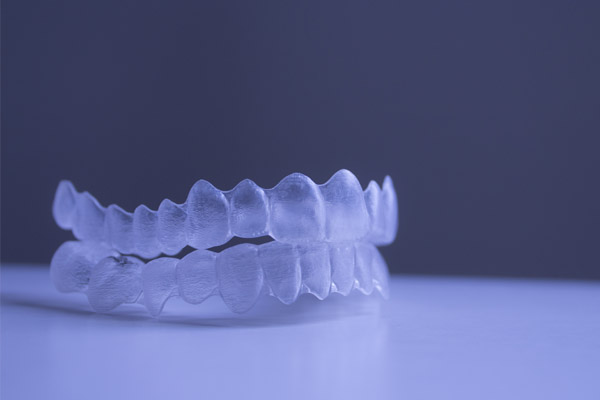 If your teen needs teeth straightening, Invisalign® Teen is one potential option you can choose. The treatment has both benefits and drawbacks when compared to traditional braces.
If your teen needs teeth straightening, Invisalign® Teen is one potential option you can choose. The treatment has both benefits and drawbacks when compared to traditional braces.
Invisalign treatment for teens
Invisalign is a brand of clear aligners that can be used in place of traditional braces for straightening teeth. The Invisalign Teen treatment differs only slightly from the adult option. The aligners in the teen version have a series of blue dots that fade as the aligners are worn. This helps parents determine whether their teen is wearing the treatment long enough to effectively straighten the teeth.
Dental issues that can be treated with Invisalign
Several dental issues can be treated with these aligners:
- Crowded teeth
- Gaps in teeth
- Open bite
- Some kinds of underbite, overbite, and crossbite
How the treatment works
The process begins with a dentist creating a 3-D image of the patient's jaw and mouth. This image is used to create a plan for moving the teeth into the desired position. The dentist then uses the treatment plan to manufacture a series of customized plastic aligners. The aligners straighten teeth by applying pressure that gradually shifts the teeth into the desired position.
As the teeth are moved, the patient must periodically change to a new set of aligners. This usually happens about once every one to two weeks. The patient needs to wear the aligners 20 to 22 hours per day.
Factors that affect how well the treatment works
The aligners can be removed for eating, drinking, brushing, flossing, and cleaning the aligners. However, the patient should avoid removing the aligners any more often than necessary. Additionally, the patient should not clean the aligners with hot water. Hot water may warp the plastic, which can alter the fit and make the aligners less effective. The complexity of the patient's dental issues can also affect how well the treatment works. It may take more time for the treatment to correct complex bite or spacing issues.
Advantages and disadvantages of Invisalign for teens
There are several reasons Invisalign Teen may be preferable to traditional braces. There are also some concerns.
Less Noticeable
The aligners are not truly invisible, but they are significantly less noticeable than traditional braces. This may be beneficial for teens who dislike the aesthetic appearance of traditional braces or feel self-conscious about wearing braces.
Removable
The ability to remove the treatment is both a benefit and a drawback. Teens who are careful not to lose the aligners and are vigilant about wearing them the recommended time can benefit from being able to remove the treatment to eat, brush, floss, and clean the aligners. Food particles can become trapped in traditional braces, and it is not easy to brush and floss around the wires. Removing the aligners for eating and cleaning can help prevent tooth decay.
Conclusion
Invisalign aligners straighten the teeth in a similar manner to traditional braces. Some teens may prefer the appearance and other benefits of this treatment. However, they must be able to follow the treatment guidelines to be successful.
Request an appointment or call Brede Ciapciak Dental at 781-443-8134 for an appointment in our Needham office.
Recent Posts
An Invisalign dentist offers patients a clear, step-by-step treatment plan that transforms smiles while maintaining comfort and convenience. This orthodontic option uses a series of custom aligners to gradually shift teeth into ideal positions, with progress monitored at regular intervals. Understanding the treatment process month by month helps patients prepare for each stage and stay…
Invisalign® clear aligner trays are not just for adults; teenagers and some children can also benefit from this treatment system. Many teens prefer Invisalign® over traditional braces because of the numerous advantages it offers, including:Discreet treatment appliancesMore comfort throughout the entire processRemovable trays for improved oral hygieneWhile wearing these trays is easy and relatively effortless,…
A popular way to straighten teeth without traditional braces is Invisalign®. Clear aligners are available for both adults and teenagers who are interested in improving the alignment of their teeth and improving the appearance of their smiles. The aligners are not visible in the mouth and do not have metal components that can irritate sensitive…


